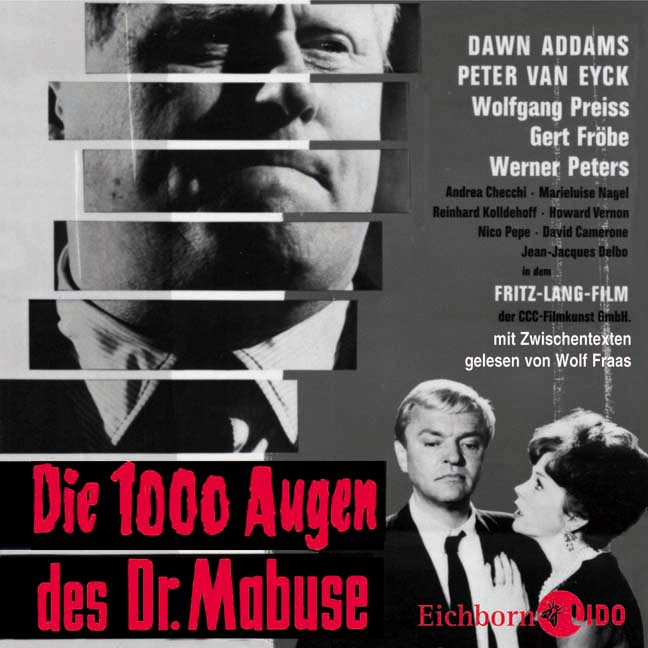
I find it interesting that in 1960 three of the greatest filmmakers of the 20th century all chose, independently of one another, to make films that dealt with voyeurism and that reflected directly on the voyeurism inherent in watching films. All three films deliberately place the audience in a place they're obviously not supposed to be, watching something private that they're obviously not supposed to see -- usually through a window.
Michael Powell made "Peeping Tom."
Alfred Hitchcock made "Psycho."
Fritz Lang made "The Thousand Eyes of Dr. Mabuse" ("Die Tausend Augen des Doktor Mabuse").
"Peeping Tom" is about a young man who works for a London film studio by day but makes his own little private independent films in his spare time. His father was a behavioral psychologist who used our hero (or anti-hero) as a test subject when he was a lad. Daddy would pop into Junior's room at midnight, throw a snake in the bed with him and film his reactions. Now that Junior is all grown up, he is killing women and filming them as he kills them. This film also is one of very few screen appearance of Moira Shearer other than Powell's "The Red Shoes."
"Psycho" was based loosely on the true story of Ed Gein, the serial killer on whom another movie also was based -- "Texas Chainsaw Massacre". The film opens with the camera panning across a city skyline, stopping at one building and then moving in toward a window. The audience sees a man and a woman putting their clothes on, apparently having just been intimate with each other. From this audience-as-voyeur starting point, characters peek at each other through windows or holes in walls, and, as at the beginning, the audience is often placed in the role of voyeur, with the camera peeking through a window or a hole or a crack.
"1,000 Eyes of Dr. Mabuse" was the last film that Fritz Lang made. It was also the first film he had made in Germany since the 1930s. And it was also the final chapter in his own series of films regarding Dr. Mabuse. The original silent serial, "Dr. Mabuse, der Spieler" ("Dr. Mabuse the Gambler") was about a criminal genius who constantly managed to stay one step ahead of the police who were on his trail (and, as such, owed a debt to Feuillade's serials "Les Vampires" and "Fantômas"). In the sequel, "The Testament of Dr. Mabuse," Mabuse is locked safely in an asylum, but crimes in his style are occurring in the area surrounding the asylum. "Testament" is very visually and aurally striking in an "Eraserhead" kind of way. By 1960, Mabuse is, of course, long dead, but his influence seems to live again. As with "Psycho," the hero of our story and the audience are placed in the role of voyeur through the use of two-way mirrors and hidden cameras.
So why voyeurism? And why 1960? Is it purely coincidence, or was there some global (or European) event in the late 1950s that made all three independently decide to make films that did not just incorporate voyeurism into the plot, but also placed the audience in the role of voyeur? All three seem to have recognized the window as a metaphor for the movie screen -- something that stands between the viewer and that which he is viewing, something that allows him to see clearly while remaining safe from having to interact with those whom he is watching. And they all seem to have enjoyed the irony of an audience watching someone who is watching someone else. But why all three directors came up with these ideas in the same year is a mystery to me.
"Peeping Tom" unnerved people thoroughly, critics in particular. The critical reaction to "Peeping Tom" was so violent that Michael Powell retired from filmmaking. When "Psycho" was set for release in England shortly after "Peeping Tom," Hitchcock refused to allow any advance screenings for the critics. When asked why, he reportedly said something like, "I saw what happened to Mickey Powell, and they're not going to have the chance to do the same to me."
So there's your "triple feature" recommendation from your Uncle Billy.









No comments:
Post a Comment